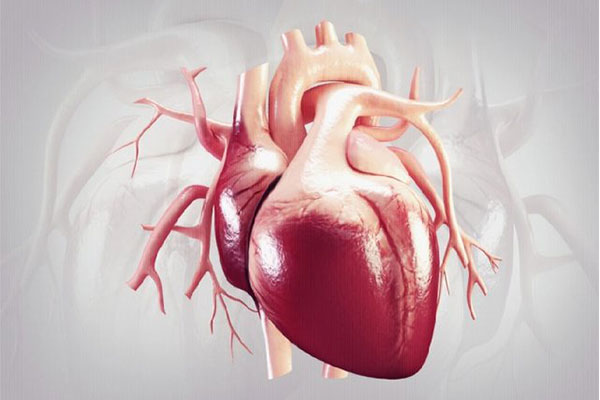پیوند قلب آخرین راه درمانی در بیماران مبتلا به نارسایی قلبی شدید است که علیرغم درمانهای دارویی استاندارد همچنان علامت دار هستند وتخمین زده میشود که میزان بقای آنها کمتر از یک سال است. باید توجه داشت که پیوند قلب علاج قطعی بیماری نیست بلکه خود یک نوع درمان است که باعث بهبود کیفیت زندگی بیمار میشود. میزان بقا بیماران پس از پیوند در حدود ۱۵ سال تخمین زده میشود.
در چه بیماریهایی پیوند قلب توصیه میگردد :
-۱ نارسایی قلبی دیلاته با پمپاژ کمتر از %۲۵
-۲ نارسایی قلبی در زمینه انسداد عروق کرونر وپمپاژ کمتر از% ۲۵
-۳ بیماریهای مادرزادی قلبی پیچیده که درمان دارویی یا جراحی مناسبی برای آنها وجود نداشته باشد.
در چه بیمارانی پیوند قلب توصیه نمیشود:
بعضی از افراد به علت بیماری ارگانهای دیگر غیر از قلب کاندید مناسبی برای پیوند نمیباشند. مثل افراد مبتلا به:
-۱ بیماری کبد وکلیه و ریه
-۲ بیماران دیابتیک وابسته به انسولین که دیابت باعث درگیری واختلال عملکرد اعضا بدن شده است .
-۳ بیماران مبتلا به بدخیمی
-۴ افراد مبتلا به بیماری عروق محیطی
-۵ مقاومت عروق ریوی بالا
-۶ ترومبوامبولی اخیر
-۷ سن بالاتر از ۶۰ سال
-۸ اعتیاد به مواد از جمله سیگار و تریاک….
قبل از پیوند بررسی های زیادی باید انجام شود تا مشخص شود ایا افراد مبتلا به نارسایی قلبی کاندید مناسبی برای پیوند هستند یا نه. بررسی های قبل از عمل به طور خلاصه شامل موارد زیر میباشد :
-تستهای آزمایشگاه: نظیرتعیین گروه خونی واندازه گیری هموگلوبین و تستهای عملکرد کبدی و کلیوی و تستهای بیوشیمی.
-بررسی از نظر هپاتیت و ایدز وعفونتهای ویروسی نظیرسایتو مگالوویروس وابشتین بار ویروس.
-بررسی از نظر سل وبیماریهای قارچی.
-اندازه گیری انتی ژن اختصاصی پروستات در اقایان و تست پاپ اسمیر در خانمها.
-سایر تستهای ازمایشگاهی بر اساس شرایط خاص.
-تستهای تصویربرداری شامل: انژیوگرافی عروق کرونر ,اکوکاردیوگرافی ,عکس رادیولوژی ودا سی تی اسکن قفسه سینه وسونوگرافی کامل شکم و لگن.
-سایربررسی های قلبی وریوی شام: تست عملکرد ریوی, تست ورزش قلبی ریوی برای بررسی شدت بیماری وشدت ناتوانی فرد٬ اندازه گیری فشارهای حفرات سمت راست و چپ قلب و تعیین میزان مقاومت عروق ریوی.
-بررسی سلامت دهان و دندانها.
پس ازانکه بیماری به عنوان مورد مناسب پیوند شناخته شد ٬مشخصات وی وارد لیست پیوند میشود و وقتی که قلبی اهدا شود بر اساس شدت بیماری و گروه خونی وسایز بدن٬ فرد گیرنده انتخاب خواهد شد. به محض فراهم شدن قلب مناسب اهدا ٬با فرد گیرنده تماس گرفته میشود تا درعرض چند ساعت دربیمارستان محل پیوند قلب حضور یابد٬ تا آمادگیهای قبل ازعمل سریعاً انجام شود.

جراحی
پس از بستری شدن بیمار در بیمارستان٬ قبل از شروع جراحی انژیوکت وریدی در دست یا بازوی بیمار تعبیه میشود ٬سوند فولی تعبیه میشود و ممکن است کاتترهایی در گردن٬ مچ دست یا ناحیه کشاله ران تعبیه شود تا از آن طریق بتوان وضعیت قلب و فشار خون را حین عمل تحت نظر داشت.
عمل جراحی تحت بیهوشی کامل صورت میگیرد. قفسه سینه از قسمت میانی جناغ سینه برش داده میشود .در طول عمل جراحی٬ خون بیمار از طریق یک ماشین بای پس قلبی ریوی در بدن جریان می یابد و خون و اکسیژن اعضا بدن از این طریق تامین میشود.قلب فرد گیرنده از بدن خارج میشود وقلب دهنده به جای ان قرار میگیرد و دوخته میشود ٬سپس ماشین قلبی ریوی از بدن خارج میشود و خون در قلب پیوند شده جریان مییابد.
وقتی که قلب جدید در بدن فرد گیرنده پیوند میشود ٬سیستم ایمنی طبیعی بدن نسبت به قلب جدید واکنش نشان میدهدو به ارگان جدید حمله میکند. بنابراین برای اینکه قلب جدید بتواند در بدن فرد گیرنده سالم باقی بماند و فعالیت کند باید داروهایی تجویز کرد تا سیستم ایمنی بدن را تضعیف کند. این داروها از قبل از عمل جراحی تجویر میشوند و تا اخر عمر ادامه مییابند٬ گرچه تعداد و دوز آنها با گذشت زمان کمتر میشود.
خطرات عمل جراحی: مانند هر عمل جراحی٬ ممکن است بعد از پیوند مشکلاتی اتفاق بیافتد٬ خونریزی٬ عفونت٬ لخته شدن خون (که ممکن است باعث حمله قلبی مغری ویا امبولی ریوی شود)٬ مشکلات تنفسی٬ اختلال عملکرد کلیه و… مواردی از مشکلات بعداز عمل جراحی پیوند میباشد.
پس از جراحی: پس ازجراحی فرد پیوند شده به بخش مراقبتهای ویژه منتقل میشود و ممکن است چندین روز در این بخش بماند. فرد بیمار ممکن است تا چند ساعت یا حتی چند روزپس از عمل جراحی به دستگاه تنفس مصنوعی (ونتیلاتور) متصل باشد ولی به محضی که بیمار بتواند تنفسهای نرمال و موثر داشته باشد از دستگاه جدا میشود. در چند روز اول پس از عمل داروهای انتی بیوتیکی وریدی و داروهایی برای حفظ فشار خون و عملکرد قلب تجویز میشود که به تدریج این داروها قطع میشوند. داروهای مهار کننده سیستم ایمنی هم که قبل از عمل جراحی شروع شده بودند٬ پس از عمل هم طبق دستور العمل مرکز پیوند قلب ادامه مییابد و لازم است تا سطح خونی بعضی از این داروها به طور مرتب چک شود تا بر اساس سطح خونی دارو تنطیم شود. در طول مدت بستری در بخش مراقبتهای ویژه٬ تیم پرستاری و بازتوانی ریوی و اندامی فرد را آماده میکنند تا کم کم به بخش عادی منتقل شودو به طور معمول پس ۱۴روز فرد از بیمارستان مرخص میگردد ٬ولی در صورت بروز مشکلاتی٬ از نظیر عفونت و خونریزی و… ممکن است طول مدت بستری بیشتر باشد. پس از ترخیص فرد باید محل زخم عمل جراحی را تمیز و خشک نگه دارد٬ و به طور مرتب توسط تیم جراحی ویزیت شود٬ در هر ویزیت ممکن است تستهای آزمایشگاهی٬ عکس قفسه سینه و بیوپسی لازم باشد.
رد پیوند و بیوپسی: همانطور که گفته قبلا” ذکر شد٬ قلب جدید توسط سیستم ایمنی بدن به عنوان عضو غریبه در نظر گرفته میشود و به ان حمله میکند٬ بنابراین تمام افراد پیوندی لازم است که داروهای تضعیف کننده سیستم بیماران در سال اول ۲۵% ایمنی مصرف نمایند٬ ولی علیرغم مصرف این داروها٬ پس از پیوند ممکن است درجاتی از رد پیوند را تجربه کنند. گاهی اوقات رد پیوند علامتی ندارد و فقط لازم است دوز داروها را افزایش داد ولی گاهی اوقات فراموش کردن چند دوز دارو ممکن است باعث رد پیوند شدیدی شود که حیات فرد را به خطر بیاندازد٬ لذا لازم است فرد گیرنده در مصرف صحیح داروهای خود بسیار جدی و مراقب باشد.
از انجایی که مراحل اولیه رد پیوند بدون علامت است لازم است تا با روش نمونه برداری (بیوپسی)٬ بافت قلب را ازنظر میکروسکوپی آزمایش کرد تا در صورت بروز تغییرات ناشی از رد عضو درمانهای لازم شروع شود. بیوپسی معمولا” از طریق ورید گردن یا شاله ران صورت میگیرد. ریسک رد پیوند درشش ماه اول پیوند بیشتر از هر زمانی است و به تدریج با گذشت زمان خطر ان کاهش مییابد. بنابراین تعداد موارد بیوپسی نیز در شش ماه اول بیشتر است و به تدریج تعداد آن کاهش مییابد.
عوارض طولانی مدت پیوند قلب:
– رد پیوند که در مورد ان قبلا”توضیح داده شد
– عوارض جانبی داروهای تضعیف کننده سیستم ایمنی نظیر بروز دیابت ٬فشار خون و اختلال عملکرد کلیه
– بد خیمی: خطر بروز بدخیمی هایی چون کانسر پوست و لنفوم و… پس از پیوند به علت مصرف داروهای تضعیف کننده سیستم ایمنی افزایش میابد.
– عفونتهای فرصت طلب
– درگیری سرخرگهای کرونر قلب که ممکن است باعت حمله قلبی و نارسایی قلبی و اریتمی و حتی مرگ ناگهانی شود.

